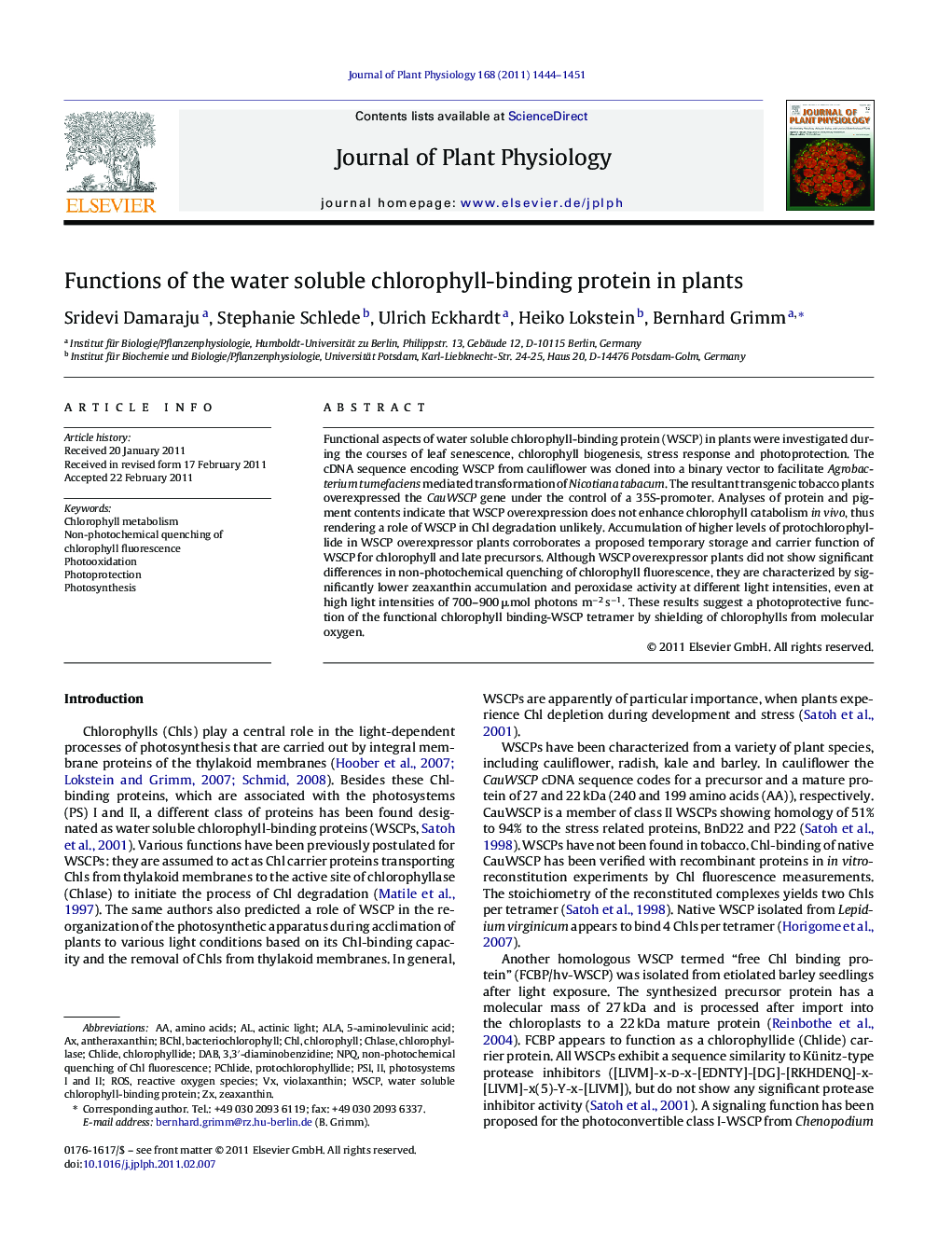| Article ID | Journal | Published Year | Pages | File Type |
|---|---|---|---|---|
| 2056484 | Journal of Plant Physiology | 2011 | 8 Pages |
Functional aspects of water soluble chlorophyll-binding protein (WSCP) in plants were investigated during the courses of leaf senescence, chlorophyll biogenesis, stress response and photoprotection. The cDNA sequence encoding WSCP from cauliflower was cloned into a binary vector to facilitate Agrobacterium tumefaciens mediated transformation of Nicotiana tabacum. The resultant transgenic tobacco plants overexpressed the CauWSCP gene under the control of a 35S-promoter. Analyses of protein and pigment contents indicate that WSCP overexpression does not enhance chlorophyll catabolism in vivo, thus rendering a role of WSCP in Chl degradation unlikely. Accumulation of higher levels of protochlorophyllide in WSCP overexpressor plants corroborates a proposed temporary storage and carrier function of WSCP for chlorophyll and late precursors. Although WSCP overexpressor plants did not show significant differences in non-photochemical quenching of chlorophyll fluorescence, they are characterized by significantly lower zeaxanthin accumulation and peroxidase activity at different light intensities, even at high light intensities of 700–900 μmol photons m−2 s−1. These results suggest a photoprotective function of the functional chlorophyll binding-WSCP tetramer by shielding of chlorophylls from molecular oxygen.
